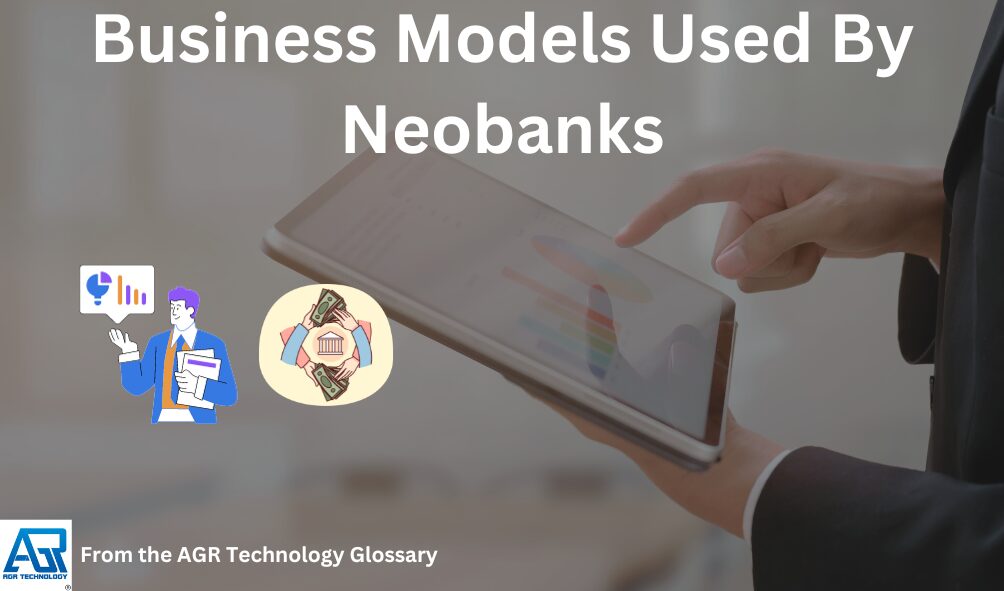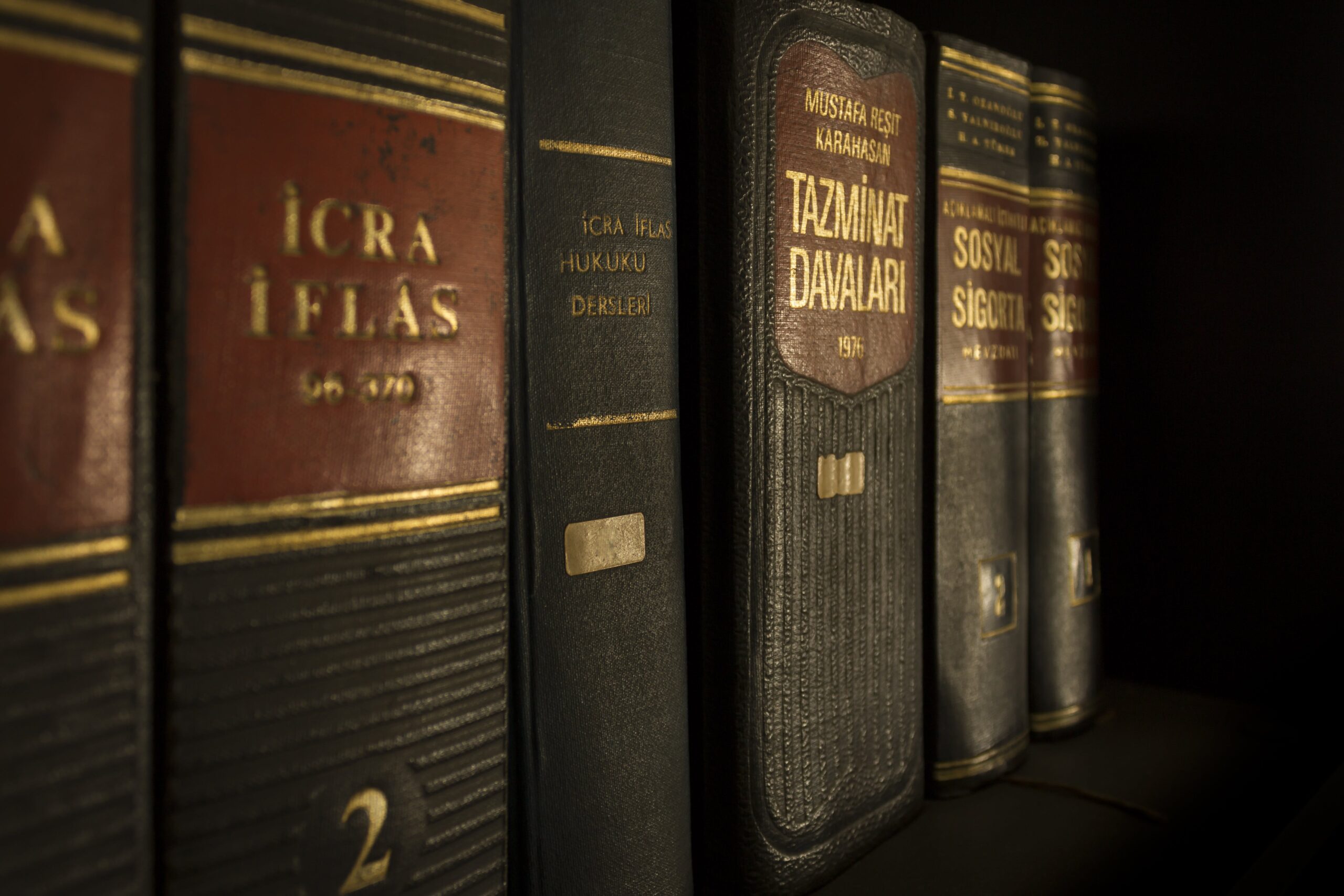Introduction

Neobanks are emerging as a revolutionary force in the world of finance, harnessing the power of modern technology to offer streamlined banking services. Unlike traditional banks, they operate exclusively online or through mobile apps, which allows them to offer more flexible and often cost-effective financial services. As fintech companies, neobanks utilize apps, software, and other technologies to facilitate mobile and online banking experiences that cater to the tech-savvy consumer.
One of the hallmarks of neobanks is their user-friendly platforms that simplify processes like money transfers, bill payments, and receiving deposits. They are sometimes referred to as “challenger banks” because of their potential to challenge the status quo of traditional banking. By focusing on digital-first strategies, they often provide innovative features and personalized services that appeal to digital natives and those seeking alternatives to conventional banking institutions.
Although Neobanks and cryptocurrency exchanges are distinct aspects of the developing financial landscape, their convergence underscores the fluid nature of modern finance. Neobanks, which are distinguished by their digital-first strategy and lack of physical branches, both represent the trend toward digital financial services. While neobanks strive to provide efficient and user-friendly banking services, cryptocurrency exchanges enable the trading of digital assets such as Bitcoin and Ethereum. Neobanks and cryptocurrency exchanges are growing globally in countries such as Australia, New Zealand, Norway, and the UAE, where the financial sector is increasingly embracing digital innovation. Exploring the offerings of cryptocurrency exchanges in Australia, offerings of crypto exchanges in Hong Kong, New Zealand crypto exchange apps, Norway crypto trading apps, software to help consumers in Taiwan trade Cryptocurrencies and the apps to help people in United Arab Emirates trade crypto might provide significant insights into the varied financial ecosystems that are growing in these nations.
Key Takeaways
- Neobanks are fintech companies offering digital banking services predominantly through mobile apps
- They prioritize user experience, leveraging technology to provide convenient and often lower-cost services
- Neobanks represent a modern approach to banking, challenging traditional models with innovative features
Definition of Neobanks
Neobanks are modern financial institutions that operate exclusively online without traditional physical branch networks. They are known for their agility in providing banking services and typically focus on app-based experiences with user-friendly interfaces.
Characteristics of neobanks include:
- Digital-only presence: Neobanks offer services through mobile apps or websites.
- Fintech Innovation: They utilize financial technologies to streamline processes and enhance customer experience.
- No Physical Branches: Unlike conventional banks, neobanks do not have brick-and-mortar locations.
- Convenience: Users can access services anytime and anywhere, with simplification of traditional banking features.
Compared to traditional banks, neobanks often have lower fees and offer higher interest rates on savings due to their reduced overhead costs. They typically aim to be more inclusive, targeting underserved demographics and those who prefer a digital-first banking approach.
Example services offered by neobanks include:
- Checking and savings accounts
- Budgeting tools
- Peer-to-peer payments
- International currency exchange
- Real-time transaction notifications
Despite their online-only model, most neobanks partner with established banks to ensure customer deposits are insured, such as coverage provided by the FDIC in the United States. Their regulatory status may vary, with some holding banking licenses while others operate under alternative financial service licenses.
History and Evolution of Neobanks

Neobanks have transformed the banking landscape through digital innovation, arising from customer demand for more accessible and user-friendly financial services.
Early Beginnings
The inception of neobanks can be traced back to the early 2010s, emerging as a response to the global financial crisis of 2008. Disillusionment with traditional banks paved the way for tech-driven startups to offer banking services. These neobanks, devoid of physical branches, initially focused on simplistic and customer-centric features such as no-fee accounts and improved user experiences.
Recent Developments
Recently, the neobank industry has seen significant evolution. These digital banks have shifted from not only offering basic checking and savings accounts but also a range of products such as personal loans, insurance, and investment services. Coupled with advancements in technology, neobanks now leverage big data and AI to provide personalized financial advice and enhance security. The sector has witnessed a wave of neobanks applying for bank charters to offer a fuller suite of services, challenging the traditional banking model.
Business Models of Neobanks

Neobanks operate on modern financial frameworks that diverge from traditional banking structures. They leverage cutting-edge technology to provide services with an emphasis on accessibility and user experience.
Revenue Streams
Neobanks generate income through various channels that capitalize on their digital-first approach. Primarily, they earn through interchange fees charged to merchants when customers use the neobank’s debit cards for transactions. Furthermore, they may collect fees from out-of-network ATM withdrawals and offer premium subscription services that unlock advanced features. Some neobanks also profit from cash advance services, providing short-term loans to customers.
Cost Structure
The cost structure of neobanks is significantly leaner compared to traditional banks, primarily because they operate online and don’t maintain physical branches. Their main expenses include technology infrastructure, software development, and customer support. Marketing costs can be substantial as well, as they strive to grow their customer base in a competitive fintech space. Neobanks often save on regulatory and operational costs, which enables them to pass these savings on to their customers in the form of lower fees.
Other key features:

Digital-First Approach
Neobanks operate exclusively online, often through mobile applications or websites. They are designed to function without physical branches, leveraging technology to offer banking services that are accessible anytime and anywhere. This approach allows for real-time transactions and banking activities, making neobanking highly efficient and convenient.
User Experience
The user interface of neobanks is typically clean, intuitive, and easy to navigate. They prioritize the user’s convenience, presenting features such as automated budgeting tools, customizable alerts, and real-time spending analytics. The goal is to simplify financial management and provide a seamless online banking experience.
Security Measures
Neobanks take security seriously, employing advanced cybersecurity protocols to protect users’ data and funds. Measures like two-factor authentication, biometric security, and end-to-end encryption are common, providing customers with peace of mind while using digital banking services.
Regulatory Environment

Neobanks operate under a set of regulations that ensure their operations are both legal and fair to consumers. These digital financial institutions are subject to a complex web of rules that vary by region and dictate how they provide services.
Licensing Requirements
Neobanks require appropriate licensing to operate legally. The type of license needed can differ based on the services they offer and the regions in which they operate. For example, some neobanks may partner with established banks to offer FDIC-insured products without requiring a bank charter themselves. Others may seek a full banking license, which involves a rigorous application process and adherence to capital requirements.
Compliance and Oversight
The level of compliance and oversight for neobanks can vary. While traditional banks are often regulated by multiple agencies, neobanks may experience different degrees of scrutiny depending on their business model and the specific financial services they provide. For instance, the Consumer Financial Protection Bureau (CFPB) is pushing for stricter oversight of fintechs to protect consumers, signaling an evolving regulatory landscape that neobanks must navigate.
Comparison with Traditional Banks

Neobanks represent a modern approach to banking, offering a digital-first experience and typically leaner fee structures when compared to their traditional banking counterparts.
Service Delivery
Neobanks operate entirely online, providing services through mobile applications and websites. They offer the convenience of managing finances anywhere and at any time without the need for physical branches. Traditional banks, on the other hand, usually offer a hybrid model, comprising both a digital presence and physical locations where customers can receive personal services. For example, while a neobank may facilitate account opening easily online, a traditional bank might require a visit to a branch for certain services or to resolve complex issues.
Fee Structures
Neobanks often feature lower fees than traditional banks. This reduction in fees is largely due to the absence of costs associated with maintaining physical branches and large staff rosters. As a result, neobanks can offer competitive rates on savings and lower or no account fees. Traditional banks tend to have a more complex fee structure that may include monthly maintenance fees, minimum balance fees, and higher loan rates to cover their operational costs.
Challenges Facing Neobanks
Neobanks, while innovative, encounter various issues as they scale, strive for profitability, and seek to build trust within the marketplace.
Scalability
The growth of neobanks often presents significant scalability challenges. Neobanks must navigate complex regulatory landscapes that can hinder rapid expansion efforts. For example, adapting to the regulatory framework of the U.S. market is a considerable challenge due to its complexity. Furthermore, their digital-only model requires robust technology platforms that can support a growing user base without physical locations, which significantly impacts operational scalability.
Profitability
Achieving profitability is a major hurdle. Neobanks start with lower overheads due to the absence of brick-and-mortar branches, which theoretically allows for cost-saving; however, generating steady revenue streams is still a prominent challenge. They often offer fee-free services to attract customers, which can delay the onset of profitability. In this context, the business models of neobanks must evolve to find sustainable income without compromising the competitive advantages that make them appealing to consumers.
Trust and Reputation
Building trust and reputation is critical for neobanks to secure a loyal customer base. They face the task of convincing potential customers to switch from traditional banks to a purely digital platform. Without the tangible presence of Physical branches, neobanks must work harder to gain and retain consumer trust. The challenge is twofold: establishing a reputable brand and ensuring the security and reliability of their digital services in an environment where consumers are particularly sensitive to such concerns.
Future of Neobanks
The landscape of neobanking is continually evolving, shaped by rapid advances in technology and changing market dynamics. As they stride forward, neobanks are not just altering traditional banking paradigms but are also paving new avenues for financial interaction.
Technological Innovations
Artificial Intelligence (AI):
![]()
AI (Artificial Intelligence) is a cornerstone in the progression of neobanks, enhancing customer experience and operational efficiency. Neobanks are utilizing AI to provide personalized financial advice and automate risk assessments. Simon Kucher & Partners has underscored the necessity for neobanks to harness such innovations to stay competitive.
Blockchain:
![]()
With a focus on security and transparency, neobanks are increasingly integrating blockchain technology. It not only fortifies the security apparatus but also streamlines transaction processes.
Market Trends
Venture Capital Investment: Despite fluctuating economies, neobanks have captured the attention of venture capitalists, with substantial investments fueling their growth. For instance, global neobanks raised over $12 billion in 2021, indicating sustained investor confidence.
Customer Demand: Customers are showing a marked preference for banking services that offer convenience and simplicity, traits inherent in neobanking platforms. This shift in consumer behavior continues to push neobanks towards innovative solutions to meet evolving needs.
Conclusion
We hope you found this page about neobanks to be helpful and how they fit into the digital financial landscape and ecosystem that is constantly changing. Be sure to share it with anyone you think would find it interesting and check out our blog for other fintech related content as well as further pages on our glossary for similar content.
Related pages:
Altcoin (Alternative crypto coins)
Digital Wallets / Smart Wallets
DAO (Decentralized Autonomous Organization)
Dapp (Decentralized Application)
Different platforms that enable you to receive Cryptocurrency payments on your website
List of trusted and top-rated Crypto exchanges and applications for Singapore users
Blockchain Explorer Definition
What is market analysis in the context of Cryptocurrencies?
What are Initial Exchange Offerings (IEOs)
Buyers Guide to finding top-reviewed CFD investment software in Dubai and the UAE area
Net worth calculator – online utility/app
Mortgage affordability calculator – online tool
CFD Trading in Australia | Best CFD Trading Platform (Comparison)
Top-rated Cryptocurrency exchanges & applications for India
Crypto exchanges for South Africans
Some of the top-rated Cryptocurrency exchanges & apps for Saudi Arabia
Some leading best small business loan/financing providers for Perth businesses
Different commercial loan brokers for Melbourne businesses
Collection of some of the best day trading platforms for Australians
ICO Marketing Solutions to help brands capture more online reach
CMC Markets Alternatives for Australian end-users wanting to start trading
Coinspot alternatives platforms Australians wanting to get started with Cryptocurrencies
Services to help you recover lost Crypto from your devices
List of some top Etoro alternatives for Australian forex traders
What to look for when choosing a neobank app
Web3 Marketing Services By AGR Technology to help brands reach more users
Web3 Software Development Services By AGR Technology
NFT Digital Marketing Services By AGR Technology
Simple Guide Showing Australians how to buy Cryptocurrency
Earn interest on your Cryptocurrency assets
How to buy Bitcoin or other Cryptocurrency
Stock market trading software Australia
How to pay overseas staff from Australia online
Guide to buying Etherium (Eth) in Australia
Top-rated Alternatives to Etoro for Australian CFD traders
Top Alternatives to Swyftx for Australian Crypto users
Some of the best Cryptocurrency exchanges/apps for Canadians
Frequently Asked Questions
Here is a compilation of some common questions and answers around the topic:
What is the distinction between a neobank and a traditional fintech company?
A neobank is a type of fintech company specialized in offering streamlined, digital-first banking services, often without any physical branches. Traditional fintech companies, on the other hand, may offer a wider range of financial technologies that aren’t limited to banking.
Can Revolut be classified as a typical example of a neobank?
Yes, Revolut operates as a neobank, providing customers with financial services such as money transfer and exchange through its mobile app without operating a traditional brick-and-mortar banking network.
How do neobanks differ from digital banks and online banking platforms?
Neobanks are entirely online and do not have any physical branches, focusing purely on digital innovation to provide banking services. Digital banks and online banking platforms may be digital arms or services of traditional banks, having a physical presence but offering online services.
What are the largest neobanks currently operating in the United States?
Chime and Varo are among the largest neobanks in the United States, with large customer bases and comprehensive digital banking solutions tailored for mobile use.
Are platforms like Chime and SoFi considered part of the neobank industry?
Platforms like Chime fall squarely within the neobank industry, while SoFi spans across the fintech spectrum by offering a broader range of financial products, including loan services and investment platforms.
How do neobanks ensure the safety and security of their customer’s funds?
Neobanks employ rigid cybersecurity measures and may partner with chartered banks to ensure customers’ funds are FDIC insured, similar to traditional financial institutions, providing a layer of security to their customer’s funds.
Source(s) cited:
[Online]. Available at: https://ia.acs.org.au/content/dam/ia/article/images/2021/Neobank.jpg (Accessed: 3 January 2024).
“What Problems Do Neobanks Face?” 2 Apr. 2023, www.linkedin.com/pulse/what-problems-do-neobanks-face-abay-serkebayev-executive-mba. Accessed 3 Jan. 2024.
“The Surge of Cybersecurity Challenges in Neobanking” BeVigil Blog, 8 Feb. 2022, bevigil.com/blog/growing-surge-of-cybersecurity-challenges-in-neobanking/. Accessed 3 Jan. 2024.
Tierney, Spencer. “5 Things to Ask Before Opening an Account at a Neobank.” NerdWallet. April 1, 2022. Accessed January 3, 2024. https://www.nerdwallet.com/article/banking/what-to-ask-about-neobanks.
Stephanie Walden, What Is A Neobank?, (June 24, 2021), https://www.forbes.com/advisor/banking/what-is-a-neobank/.
S. More, “Navigating the Neobank Landscape: A Closer Look at the Challenges”, 20-June-2023. [Online]. Available: https://www.linkedin.com/pulse/navigating-neobank-landscape-closer-look-challenges-sachin-more. [Accessed: 3-Jan.-2024].
Beck, S. (2022, December 6). How The Neobank Model Should Evolve. https://www.forbes.com/sites/forbestechcouncil/2022/12/06/how-the-neobank-model-should-evolve/
https://sherpa.digital/en/thoughts/4-main-challenges-neobanks-are-facing/. Accessed January 2, 2024.
Team, Arc. “Compared: Traditional Banks vs Neobanks” www.arc.tech/learning-center/comparing-traditional-banks-vs-neobanks. Accessed 3 Jan. 2024.
![logo-new-23[1] logo-new-23[1]](https://agrtech.com.au/wp-content/uploads/elementor/thumbs/logo-new-231-qad2sqbr9f0wlvza81xod18hkirbk9apc0elfhpco4.png)